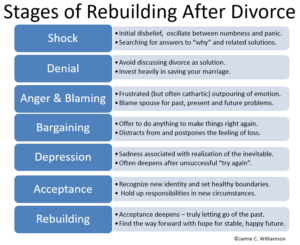How to Show Compassion in Marriage and Create Positive Sensory Override
By Jamie C. Williamson, PhD
 Happily married couples occasionally have screaming arguments. Yet, their marriages are immune to lasting damage from these fights.
Happily married couples occasionally have screaming arguments. Yet, their marriages are immune to lasting damage from these fights.
What seems to protect happy couples from severe problems is how they communicate when they are not fighting.
Of course, happily married couples are optimistic about their lives together and set high expectations for their marriage. They also live out an attitude of gratitude.
However, a growing body of research shows that the presence of compassion is also a key ingredient to a happy marriage.
What is Compassion?
Compassion includes both feelings and actions and is fueled by recognizing and accepting our shared humanity. That is, compassionate people recognize that no one is perfect, we all make mistakes, we all are affected by stressors, none of us are immune to pain and suffering, and we all should be treated with loving-kindness.
With that as background, compassion in relationships involves genuine feelings of caring and concern for your partner and actions that help address the concern through relationship understanding and action.
Why is Compassion in Marriage So Important?
When couples routinely display compassion for each other, they strengthen their friendship and create a happier home characterized by “positive sentiment override” (PSO). John Gottman explains that couples experiencing PSO feel optimistic about their relationships, have great expectations about their lives together, and routinely give each other the benefit of the doubt.
For these couples, their positive thoughts about each other are strong enough to override the negative things their partner might do. In contrast, they see negativity as evidence that their partner is somehow stressed or not themselves for some reason.
PSO spouses may notice negative events, but they don’t overreact. They are not overly sensitive and do not take the negative behavior personally. Instead, they show compassion and try to help.
How to Show Compassion Toward Your Spouse
Displaying compassion in marriage involves the ability and the desire to quickly see your spouse’s perspective and to kindly help make it easy to address the matter before it becomes a conflict.
Compassion can and should be expressed for big issues but is most often shown in little ways every day. For example, if your busy spouse forgets to gas up the car and will be late to work if she has to buy gas on the way, you assume that she’s doing her best, and you volunteer to gas up the car while she gets ready. Or, if your newly retired husband isn’t doing his fair share of work around the house, you refrain from scolding him, assume he just truly doesn’t know what needs to be done, and kindly suggest that you jointly make a list and divide the chores.
Notice that in both examples, the spouses avoid criticizing each other. They give each other the benefit of the doubt and offer to help.
Developing Compassion and Positive Sensory Override
The Norm of Reciprocity suggests that when you show compassion to your spouse, your spouse is more likely to be compassionate with you. In this way, by showing compassion, you help yourself as well as your spouse. This, in turn, strengthens your friendship and continually elevates your relationship PSO, which further protects you from feeling adversarial toward your spouse.
Of course, these reciprocal displays of compassion must start somewhere. And they begin with friendship.
The strength of a person’s desire to show compassion and understanding to their spouse is directly related to the level of intimacy and warmth in their marital friendship. The stronger the friendship, the more likely spouses will display compassionate responses to mistakes, which fuels Positive Sensory Override. This pattern establishes a protective positivity “set point” that takes a high degree of negativity to overcome.
In order to maintain their compassionate, happy marriage, couples who have a strong friendship and PSO set point need to continually invest in maintaining their intimate connection and to respond favorably to each other’s bids for emotional connection.
Couples who have let their friendship erode need to deliberately try to increase their fondness and admiration for each other before it is too late.
Let me know if I can help.
I’m a FL Supreme Court Certified Family Mediator and Couples Counselor who is part of the Gottman Referral Network. You’ll find me at Amity Mediation Workshop, where we specialize in “friendly divorce” mediation and psycho-educational “Let’s Stay Together” private workshops, designed for couples who want to restore or enhance their marital happiness. I also speak frequently on relationship topics and author the relationship blog called “Work it Out”.


























